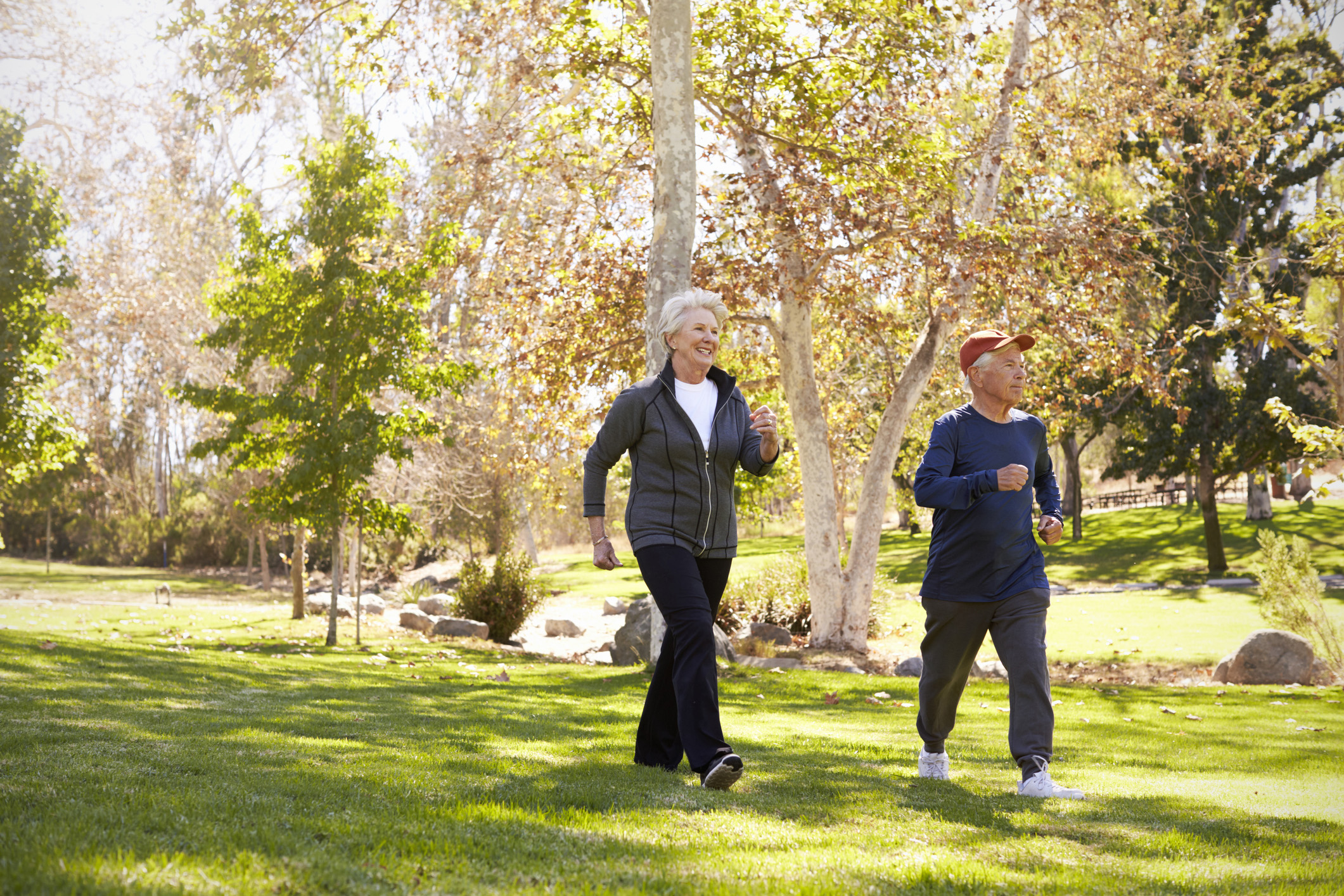More older adults are living longer, in better health and by taking steps to stay fit, seniors are able to continue enjoying their favorite activities well into old age. Counting steps with activity trackers is one way to motivate yourself to keep moving but studies have found that how you walk may be more important than distance or number of steps.
A recent study, published in the journal Biology Letters, found that varying between high intensity and a moderate pace while walking burns up to 20 per cent more calories than keeping a steady pace. And research out the University of Virginia found that women who walked with higher intensity three out of five times each week lost six times more belly fat than women who walked slowly, five days per week.
The Centers for Disease Control and Prevention recommends at least 2 hours and 30 minutes (150 minutes) of moderate-intensity aerobic activity such as brisk walking each week for healthy adults over the age of 65. Two days of muscle-strengthening activities that work all the major muscle groups is also recommended to prevent loss of muscle mass in older age. Exercise can not only preserve strength and function, it can help improve balance and prevent falls. Lifestyle choices, including diet and exercise, can also help to prevent chronic illness in older age.
By picking up the pace, just shy of breaking into a run, at short intervals during your next walk, you can lose weight faster, lower blood pressure and improve glucose tolerance. Once you have warmed up with a five minute walk, try alternating a brisk pace for 30 seconds and then returning to your normal pace for the next 4 minutes. Repeat this pattern 4 times before cooling down for 5 minutes. As your fitness level increases, try fast and slow 3 minutes sets for 30 minutes daily, at least five times per week. Learn more about high-intensity interval walk training by following this link to the myfitnesspal blog.






Add Your Voice
0 Comments
Join the Discussion